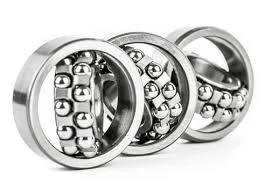
10 月 . 12, 2024 06:21 Back to list
taper roller bearing mounting arrangement
Taper Roller Bearing Mounting Arrangement
Taper roller bearings are an essential component in modern engineering, known for their ability to support both radial and axial loads effectively. Their unique design allows for efficient load distribution, making them a popular choice in various applications, including automotive, aerospace, and industrial machinery. Proper mounting arrangements are crucial to ensure optimal performance and longevity of taper roller bearings.
Design Features
Taper roller bearings consist of tapered inner and outer rings, along with a set of tapered rollers. This design permits the transmission of loads through the contact points between the rollers and the raceways, allowing for greater stability and efficiency. The ability of these bearings to handle axial loads results from the angle at which the rollers contact the raceway, a critical consideration when it comes to mounting.
Mounting Arrangements
Correctly mounting taper roller bearings is vital to prevent premature failure and to enhance performance. The mounting arrangement generally involves key considerations such as axial preload, alignment, and lubrication. The bearings are typically mounted in pairs to accommodate axial loading in both directions. The precise arrangement can vary depending on the specific application and load conditions.
1. Axial Preload One of the most critical aspects of mounting taper roller bearings is the axial preload. This preload is necessary to eliminate any clearance between the bearing components, promoting uniform contact and reducing the risk of wear. The amount of preload must be carefully calculated based on the application requirements and bearing specifications.
taper roller bearing mounting arrangement

2. Alignment Proper alignment during installation is crucial. Misalignment can lead to uneven load distribution, resulting in increased wear and potentially catastrophic failure. Techniques such as using precision alignment tools and fixtures can help achieve the desired alignment.
3. Lubrication Effective lubrication is essential for maintaining bearing performance. It reduces friction and wear, dissipates heat, and prevents contamination. The choice of lubricant—whether it be grease or oil—depends on the operating conditions, speed, and load. Proper lubrication methods should be established during the mounting process to ensure that lubrication reaches all critical areas of the bearing.
Installation Process
The installation of taper roller bearings involves several steps
- Preparation Ensure all components are clean, free of defects, and properly inspected before assembly. - Heating or Cooling Depending on the fit type, either heating the outer ring or cooling the inner ring before assembly can facilitate easier installation. - Assembly Gently press the bearing into the housing while maintaining alignment. It is crucial to avoid any forceful impacts that might damage the bearing surfaces. - Adjusting Preload After installation, the preload should be adjusted according to specifications using either shims or by selectively tightening the mounting bolts.
Conclusion
In conclusion, the proper mounting arrangement of taper roller bearings is crucial for their effective operation and longevity. By focusing on axial preload, alignment, and lubrication, engineers can ensure that these bearings perform at their best, ultimately leading to enhanced performance and reliability in various applications. Understanding these principles is integral to any engineering design that incorporates taper roller bearings.
Latest news
-
Unlocking Efficiency with Spherical Roller Bearings
NewsOct.29,2024
-
The Ultimate Guide to Thrust Ball Bearings
NewsOct.29,2024
-
The Power of Thrust Roller Bearings: Engineered for Excellence
NewsOct.29,2024
-
The Power of Deep Groove Ball Bearings for Your Application Needs!
NewsOct.29,2024
-
The Power and Performance of Cylindrical Roller Bearings
NewsOct.29,2024
-
High-Quality Ball Bearing Manufacturing Machines
NewsOct.29,2024
